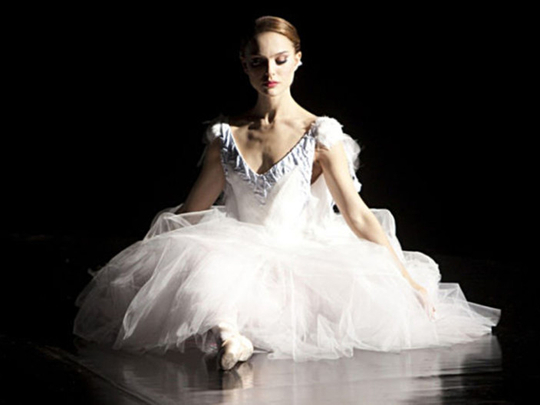
A series of scientific studies may reveal why audiences like certain dance moves more than others, and they suggest that dancers are more emotionally sensitive than the rest of us. The results may also point to a role the arts can play in empathy training.
When a ballerina sweeps her leg up high behind her, with her body arcing like a sail full of wind, audiences get a thrill. This soaring arabesque pose can be found in just about any ballet, from Swan Lake and The Nutcracker to more contemporary works.
But what is it about the pose that has attracted choreographers and audiences through the years? Does the spectator’s pleasure in seeing it stem from the accompanying music, from the story being told through the dancing, or simply from the shape of the dancer’s body?
One study isolated dance moves into very brief, silent, black-and-white video clips. With no context to go by other than the shapes of the moving bodies, participants were asked to rate their emotional response, whether they liked or disliked the moves, or found them happy or sad. Participants rated the video clips containing the rounded movements, such as the upward-curving arabesque, as significantly more positive than the clips with sharp, edgy movements.
“There must be some type of universal mechanism where our perceptual system understands that roundedness is good, and edgy might be dangerous,” says Julia F. Christensen, a research fellow in the Cognitive Neuroscience Research Unit at City University London, and lead author of the study “Affective Responses to Dance.” She points to other studies showing that when people see sharp objects, this engages danger-detection mechanisms in the brain.
“A lot of this work confirms what artists already know intuitively,” Christensen says. Her findings in a similar study with professional ballet dancers reflect this. In that study, published in the Journal of Experimental Psychology: Human Perception and Performance, the brief ballet video clips were shown to two groups of people — the dancers, and a control group of those with no dance experience. The participants wore electrodes on the tips of their fingers to detect the subtle sweat response triggered by an emotional reaction. They were also asked to rate each video clip as happy or sad.
Both groups “read” the emotions of the ballet clips correctly. But the dancers had much stronger reactions to the emotional content.
“The very cool thing about this study is that the dancers not only recognised the emotions better, but their bodies would also respond more sensitively to the displayed emotional movements. Dancers’ bodies differentiated between different emotions that were expressed in the clips, where the controls didn’t,” says Christensen.
But isn’t this what we’d expect from those with expertise in what they’re looking at? That is exactly the point, she says: The evidence suggests that training in these physical expressions made the dancers more sensitive to them. And this indicates an interesting potential, that the neurocognitive mechanisms that make people more sensitive can be trained.
Christensen, who trained in dance before injury forced her to stop, believes that her research shows “why everyone should dance. Our research indicates that dance training might be a way to make you more aware of emotions”.
“You could even hypothesise that dance makes you more empathetic,” she says, “because it seems that you learn to react automatically and more sensitively to others’ expressions.” But this still needs to be tested, she adds.
Could it be enough to watch dance, to develop greater emotional sensitivity? Or must one train as a dancer? “That is the empirical question,” says Christensen. “Is empathy a muscle that you have to train? We don’t know. There are empirical reasons to believe that training could be an option. But as scientists we are not allowed to be believers; we have to be doubters. We have to test every possible thing.”
“General empathy training programmes are not showing results yet, maybe because the mechanism is not really understood,” she says. Activities such as yoga and meditation “have some effects, but it’s hard to produce them reliably”. In any case, the evidence in her studies “suggests an intriguing potential of dance”.












